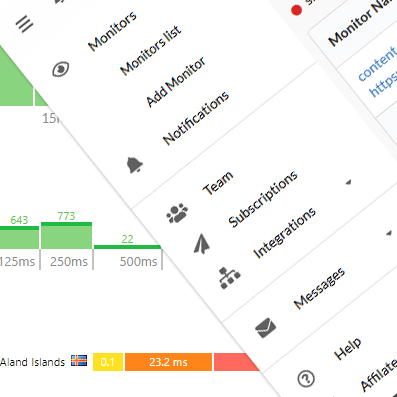How Outages Impact Customer Satisfaction and Loyalty
Customers today crave flawless, uninterrupted availability of their go-to services. Outages, whether brief or prolonged, can significantly disrupt this expectation, leading to frustration, lost productivity, and ultimately, a decline in customer satisfaction and loyalty. This article explores the multifaceted impact of outages on customer sentiment and dives deep into strategies businesses can implement to mitigate the damage and foster customer trust during critical downtime.
The consequences of outages extend far beyond the immediate inconvenience they cause. Let’s dissect the ripple effect that unfolds when a service interruption occurs:
Loss of Productivity
Outages can bring businesses to a standstill. Employees who rely on digital tools for communication, collaboration, and data access are left stranded, hindering their ability to complete tasks and meet deadlines. This translates to lost revenue for the company and a potential erosion of customer trust if deadlines are missed.
Heightened Customer Anxiety
When outages interrupt essential services, customers can experience a surge of anxiety. Imagine an online store experiencing a checkout outage during peak shopping hours. Customers on the cusp of completing a purchase are left in limbo, unsure of the status of their orders or the security of their financial information. This anxiety can translate into a reluctance to use the service again.
Damage to Brand Reputation
Frequent outages can tarnish a brand’s reputation for reliability and competence. Customers who consistently experience service disruptions may start to view the company as unprofessional or incapable of maintaining its infrastructure. Negative word-of-mouth can spread quickly, further damaging the brand’s image.
Increased Customer Churn
Dissatisfied customers have more options than ever before. In the face of repeated outages, they’re more likely to switch to competitors who offer a more stable and reliable service. This churn can have a significant financial impact on a business, especially in highly competitive industries.
While outages are inevitable, their impact on customer satisfaction and loyalty can be significantly mitigated through proactive communication strategies. Here’s how:
Transparency is Key
During an outage, customers crave information. Be transparent about the situation. Acknowledge the outage promptly through multiple channels – website banners, social media updates, and push notifications. Provide clear and concise updates on the nature of the problem, estimated restoration timeframes, and the steps your team is taking to resolve the issue.
Multiple Communication Channels
Don’t rely on a single communication channel to reach your customers. Utilize a multi-pronged approach that includes website updates, social media posts, email alerts, and even push notifications to ensure everyone is informed. This ensures customers receive updates regardless of their preferred communication method.
Empathy Matters
Acknowledge the inconvenience caused by the outage. Express empathy for your customers’ frustration and apologize for the disruption. A sincere apology goes a long way in demonstrating that you value their business and understand their plight.
Set Realistic Expectations
During an outage, avoid setting unrealistic expectations around restoration times. It’s better to under-promise and over-deliver than to set an ambitious timeframe that you can’t meet. This builds trust and prevents further frustration when delays occur.
While communication is crucial, fostering customer resilience during outages requires a more holistic approach. Consider these additional strategies:
Invest in System Redundancy
Proactive investment in system redundancy can significantly reduce the duration and impact of outages. By having backup systems in place, you can minimize downtime and ensure service continuity even when failures occur.
Regular System Maintenance
Preventative maintenance is key to reducing the likelihood of outages. Schedule regular system checks and software updates to identify and address potential issues before they escalate into full-blown disruptions.
Develop a Comprehensive Outage Response Plan
Having a well-defined outage response plan ensures a coordinated and efficient response when disruptions occur. This plan should outline communication protocols, designate roles and responsibilities, and establish clear escalation procedures for critical issues.
Invest in Customer Relationship Management (CRM)
A robust CRM system allows you to segment your customer base and deliver targeted communication during outages. For example, high-value customers or those with time-sensitive needs can receive personalized updates and support.
Once an outage is resolved, the focus should shift towards rebuilding customer trust and demonstrating your commitment to continuous improvement. Here’s how:
Post-Outage Communication
Don’t go silent after the outage is resolved. Provide a post-outage communication that explains the root cause of the disruption, the steps taken to prevent future occurrences, and any improvements implemented to strengthen your systems.
Customer Appreciation
Consider offering a token of appreciation to customers who were impacted by the outage. This could be a discount on their next purchase, a complimentary service upgrade, or extended access to a premium feature. This gesture demonstrates your appreciation for their patience and understanding.
Solicit Customer Feedback
Gather customer feedback after an outage. Conduct surveys or host open forums to understand their experience and identify areas for improvement. This valuable feedback can help you refine your communication strategies and better prepare for future disruptions.
Outages are a reality of the digital age, but their impact on your customer satisfaction and loyalty doesn’t have to be. By prioritizing proactive communication, investing in system resilience, and fostering customer appreciation, you can navigate disruptions effectively. However, true prevention is always the best course of action.

Here’s where Upzilla monitoring service comes in. Upzilla’s comprehensive suite of monitoring tools provides real-time insights into your system health, allowing you to identify potential problems before they snowball into outages. Upzilla proactively monitors your infrastructure, applications, and network performance, sending instant alerts when anomalies or performance dips are detected. This enables you to take corrective action swiftly, preventing outages and ensuring seamless service continuity for your customers.
By combining proactive communication, system resilience strategies, and a powerful monitoring tool like Upzilla, you can build a robust defense against outages. This not only minimizes disruption but also demonstrates your commitment to service excellence. Remember, customer loyalty thrives on trust and consistency.